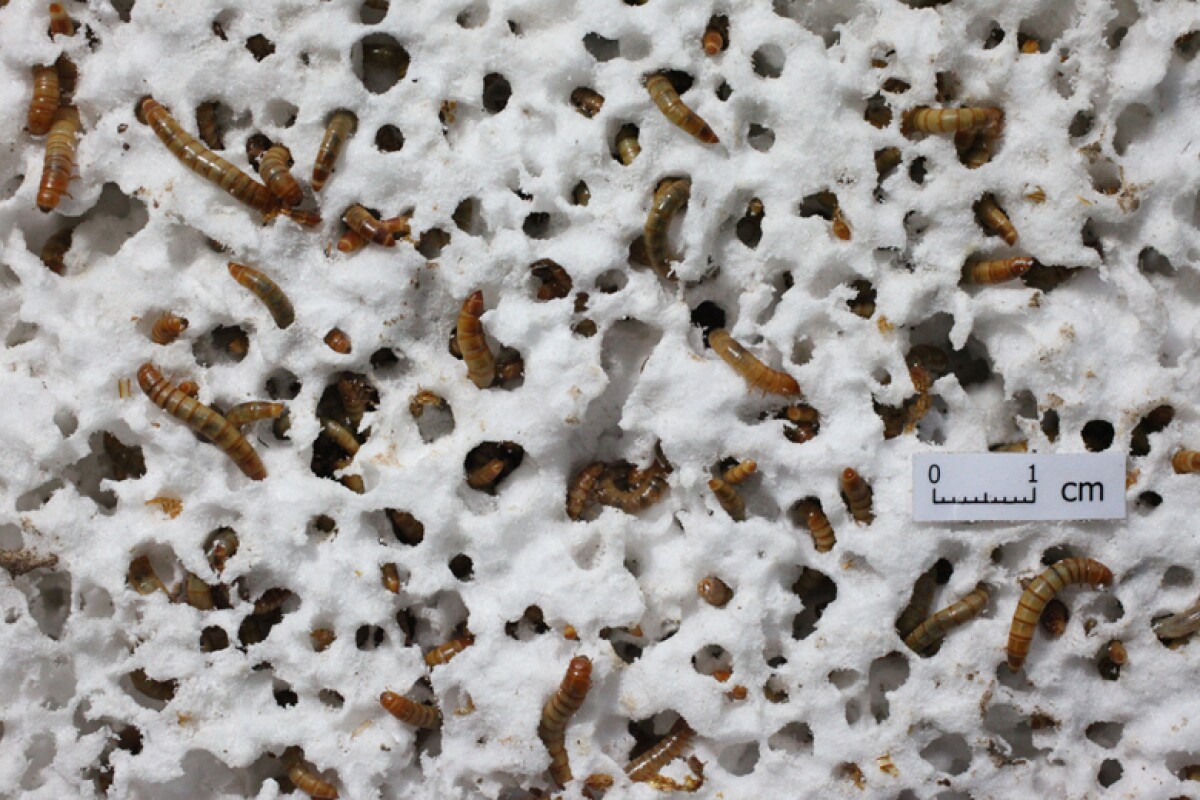If you've ever kept mealworms as food for a pet reptile or frog, then you probably fed them fruits or vegetables. What you likely didn't know, however, was that the insects can also survive quite nicely on a diet of Styrofoam. With that in mind, scientists at Stanford University have now determined that mealworms can break the difficult-to-recycle plastic foam down into a biodegradable waste product.
The Stanford team fed Styrofoam and other forms of polystyrene to a colony of approximately 100 mealworms.
Within 24 hours, the worms consumed 34 to 39 milligrams of the plastic, converting about half of it to carbon dioxide – as they would with any other food source. Bacteria in the worms' gut degraded the other half into tiny biodegradable droppings. The researchers believe that those droppings could safely be used as a crop fertilizer.
The mealworms themselves appeared to be just as healthy as worms that received a more traditional diet of vegetable matter.
Working with colleagues in China, the Stanford team members are now investigating whether mealworms or other insects could also be used to break down additional types of plastic, such as polypropylene. They also hope to find a marine equivalent to mealworms, that could consume the tons of plastic waste currently fouling the world's oceans.
Source: Stanford University




